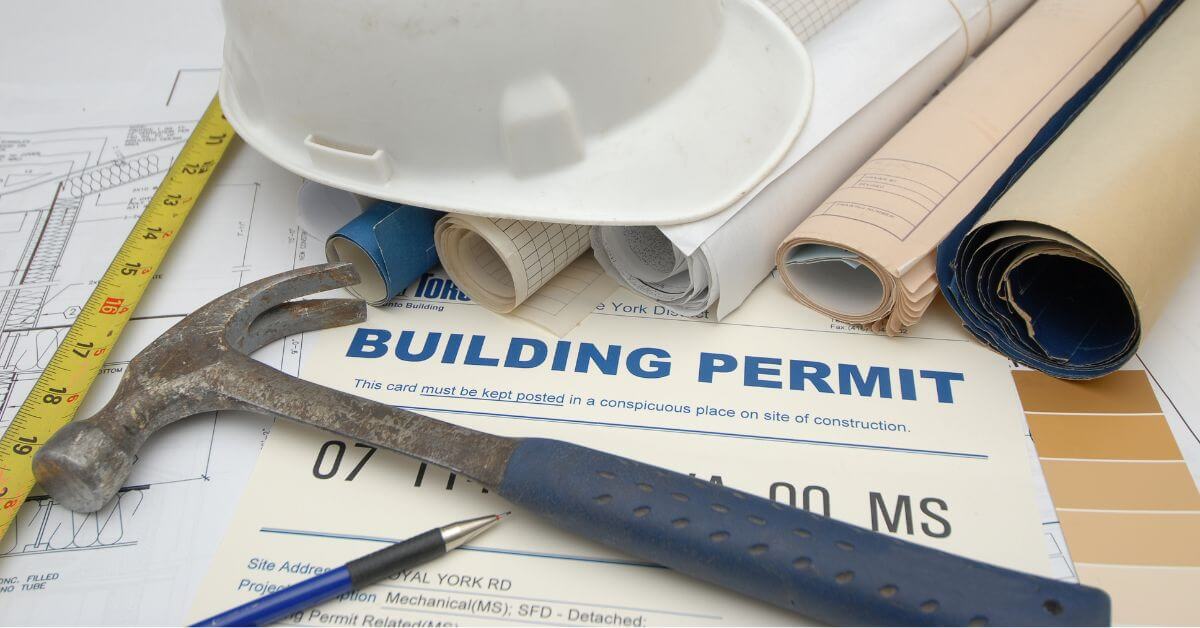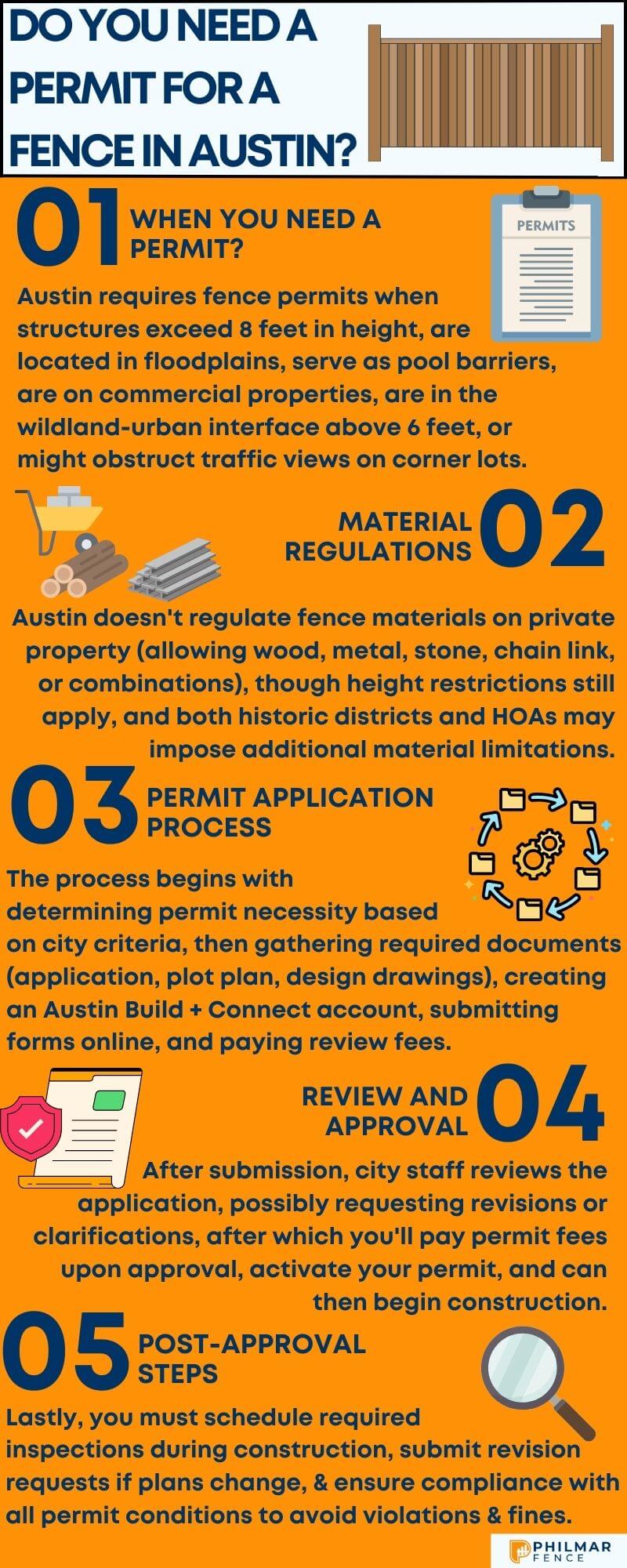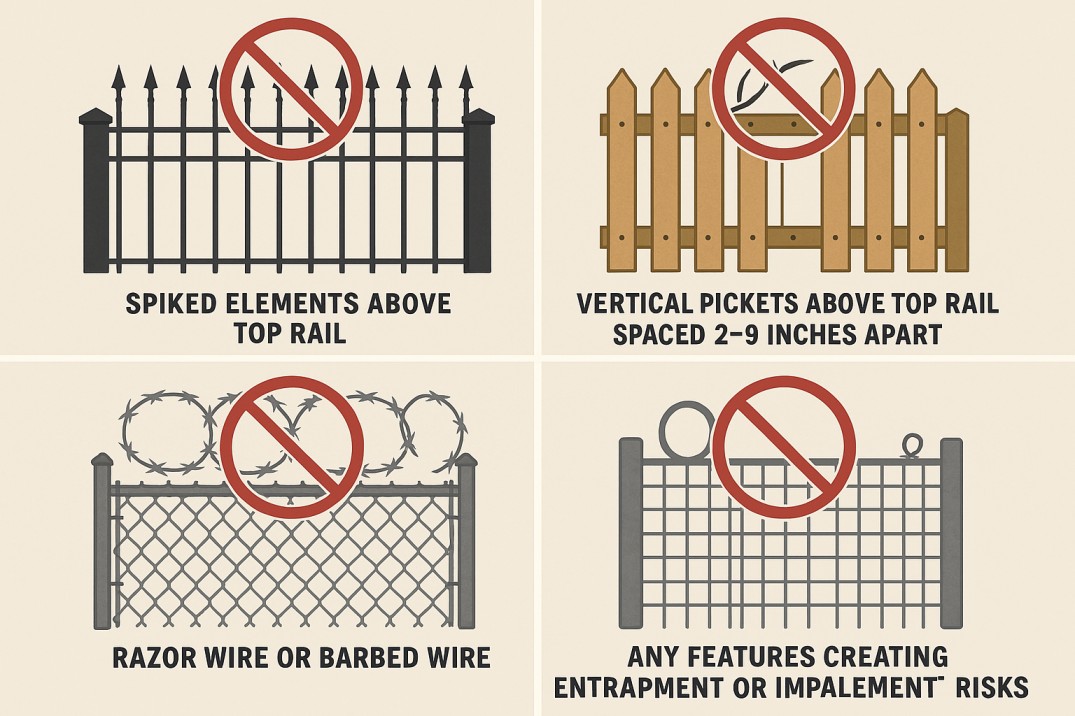Thinking of getting a new fence for your residential or commercial property? Good for you! Not only will you secure the perimeter, but you’ll also boost the property’s curb appeal. That said, you need a permit for a fence in under certain situations, and not getting one may result in fines and removal of the fence that may have cost you thousands of dollars. Since we offer professional fence services in Austin, we can guide you about situations when you do and don't need a permit and what regulations to follow even if you’re exempt from a permit.
When Do You Need a Permit For a Fence in Austin?
You need a permit for a fence in Austin if it exceeds 8 feet in height, is within a floodplain, or is located in certain zoning districts. Permits are also required for fences around pools and commercial properties. Always check with the city before starting construction to avoid violations. The general criteria given by the Austin City government include:
- Is located in a floodplain regardless of height or materials
- Is more than 8 feet high at any point
- Is more than 6 feet high for residential property along the City of Austin public right-of-way (excluding alleys)
- Requires a City of Austin letter of authorization and Board of Adjustment variance
- Is at least 6 feet high on a property with non-residential use
- Is used as a swimming pool barrier
- Is in the wildland-urban interface and higher than 6 feet
- Is on a corner lot that may obstruct traffic views
What Kind of Materials Can Be Used For a Fence in Austin Without Permit?
In Austin, you can use wood, chain link, wrought iron, or vinyl for residential fences without a permit if the fence is under 8 feet tall and not in the restricted zone. Materials must meet safety and visibility standards. Decorative elements like lattice or trellis are also allowed within height limits.
The gist is that the City of Austin does not regulate fence materials on private property. You can use:
- Any material: wood, metal, stone, or combinations
- Chain link fences (considered ornamental)
- "Ornamental fences" with no more than 20% solid material
- Any material for fences up to 7 feet, provided you're not in a floodplain
Historic districts might have additional material guidelines, but these aren't city-wide rules. HOAs also frequently restrict materials despite city permissiveness, so check those regulations too.
Fencing Regulations That Should Be Followed Even If a Permit is Not Needed:
Even without a permit, Austin fencing regulations require fences to stay under 8 feet tall, not obstruct visibility at driveways or intersections, and remain within your property line. Fences must avoid utility easements and follow neighborhood or HOA rules if applicable. Safety and structural integrity standards still apply.
Let's break down the height limits and safety requirements that apply regardless of permits.
Height Regulations
Austin classifies fences into two main types. Solid fences have more than 20% solid material. Ornamental fences have less than 20% solid material with an open design.
Fence Type | Standard Height Limit | Special Exceptions |
Solid fence on property line | 6 ft average/7 ft max from natural grade | Up to 8 ft with specific conditions |
With 1+ ft grade change | Up to 7 ft where grade changes | N/A |
Ornamental fence | Standard height restrictions don't apply | N/A |
Want an 8-foot fence? You'll need to meet specific conditions. Your fence must be on or within building setback lines or between residential and commercial properties. You might also qualify if there's a grade change of at least 2 feet within 50 feet of your boundary. Another reason? If structures nearby might help kids climb over. But here's the catch - you'll need written permission from neighbors for these taller fences.
Many fence services in Austin recommend staying under 7 feet if possible. It simplifies the process and keeps neighbors happy. The rules get enforced when someone complains, so maintaining good relationships helps.
Safe Fencing Requirements
Safety rules apply to new fences and major replacements (over 50%). These regulations came into effect July 31, 2023, so older fences are grandfathered in. Tall fences (6+ feet) on non-residential properties are also exempt.
Here's what's allowed:
- Flat-top fences without pointy parts
- Non-spiked vertical pickets (spacing matters - less than 2 inches or more than 9 inches apart)
- Chain link fences with smooth knuckle selvage tops
What you can't have:
- Spiked elements above the top rail
- Vertical pickets above top rail spaced 2-9 inches apart
- Razor wire or barbed wire (except for airport fencing required by FAA)
- Any features creating entrapment or impalement risks
The picket spacing rule causes confusion. It targets the "head entrapment zone" where kids might get stuck. Professional fence services in Austin stay updated on these safety requirements. They'll guide you through designs that look great while keeping the neighborhood safe.
Other Important Regulations:
- Corner Lots: Must not obstruct traffic visibility per City Code §14-9-2
- Contact Texas 811: Contact them at least two business days before digging (required by law)
- Swimming Pool Barriers: Minimum 4 feet high, no openings larger than 4 inches, follow Swimming Pool and Spa Code
- Fence Grounding: Required where power lines cross, maximum 1,000 feet between grounds
- Commercial Requirements: Junkyards need 8-foot screening fences with permits
- Historic Districts: Must comply with both safe fencing and historic standards
- HOA Considerations: Check for additional restrictions before installation
- Zoning and Property Lines: Zoning regulations can affect fence height and design, especially between residential and commercial properties.
- Neighbor Consent: Neighbor consent may be required for fences higher than standard limits under specific conditions, such as significant grade changes or safety concerns.
- Property boundary verification: Verify legal property lines before construction. Consider hiring a surveyor for disputed boundaries. Check Assessor's Parcel Number (APN) with city
Additional Important Resources for Fence Regulations:
For comprehensive information on fence regulations in Austin, reference these additional codes and standards:
Don’t want to do all that and just need a plug-and-play solution where a pro installs your fences while ensuring all Austin fence laws are met? Call Philmar Fence at (512) 910-0111 to do exactly that at affordable prices.
How to Get a Fence Permit in Austin, TX?
Get a fence permit in Austin, TX by submitting an application through the Austin Build + Connect (AB+C) portal. Include a site plan showing fence location and height. Permits are required for fences over 8 feet or in special zoning areas. Check with the Development Services Department for specific rules.
Here’s how to do that step by step:
- Determine permit need based on the criteria we discussed at the start of this post
- Gather documents:
- Fence Permit Application
- Plot Plan Survey with labeled elements
- Fence design drawing
- Acknowledgment of Expired Permits (if applicable)
- Create AB+C account to pay fees and manage your application
- Submit application via Residential Fence Permit Application Web Form
- Pay Plan Review Fees
- Address any review comments or extend/withdraw as needed
- Pay Permit Fees and Activate after approval
- Begin construction and schedule inspections
- Submit revisions if changes are needed
10 Tips for Working with Fencing Contractors
When hiring a fencing contractor, these considerations will help ensure your project is completed legally, safely, and to your satisfaction:
- Request detailed contracts: The agreement should specify materials, height, length, post depth, concrete specifications, timeline, payment schedule, and warranty information. Look for specific language about how changes will be handled and what happens if unexpected issues arise during installation. A vague contract often leads to disputes later.
- Discuss property boundaries: Confirm your property lines with a survey if you're uncertain. Installing a fence even slightly onto a neighbor's property can lead to costly disputes. Consider having the contractor meet with you while reviewing the survey to ensure mutual understanding of boundaries before work begins.
- Check for underground utilities: Ensure your contractor will call the local utility marking service (like 811) before digging to avoid hitting gas, water, or electrical lines. Ask about their protocol if they encounter unmarked utilities or obstacles during installation. Professional contractors should have established procedures for these situations.
- Discuss maintenance requirements: Different materials have varying maintenance needs. Ask about proper care for your specific fence type and any manufacturer warranties. Request specific information about expected lifespan under local weather conditions and when you might need to plan for treatments, repairs, or replacement.
- Plan for access points: Discuss gate locations, sizes, and how they'll function for your needs (vehicles, equipment, or pedestrian access). Consider accessibility requirements for maintenance equipment, emergency services, and future needs. Specialty gates may require additional structural support that should be accounted for in the design.
- Consider drainage: A properly installed fence accounts for water flow. Poor planning can create pooling or erosion issues. Discuss how the contractor handles sloped terrain and natural drainage patterns. Ask whether they recommend specific drainage solutions like French drains in problematic areas.
- Establish cleanup expectations: Clarify who is responsible for debris removal and site cleanup after installation. Define what "cleanup" includes—removal of excess concrete, soil restoration, protection of existing landscaping, and disposal of packaging and waste materials.
- Schedule a walkthrough: Before making final payment, inspect the fence with your contractor to address any concerns or finishing details. Prepare a checklist of items to verify, including post stability, gate functionality, hardware security, and consistent appearance. Document any agreed-upon corrections with a timeline for completion.
- Get necessary documentation: Request copies of permits, final inspection approvals, warranty information, and care instructions for your records. Ask for contact information for both warranty claims and future service needs. Some contractors offer transferable warranties that can add value if you sell your property.
- Understand soil conditions: Different soil types require different installation techniques. Ask your contractor how they account for your specific soil conditions and whether they recommend any special measures for stability in your terrain. Clay soils, sandy areas, and rocky ground each present unique challenges.
Philmar Fence Can Help You Install Fences in Austin:
If you need fence services in Austin that ensure everything from material selection to digging and installation is done while following Austin City’s fence installation and safety regulations, Philmar is your go-to fence contractor.
We have already helped many local homeowners and businesses secure their premises without compromising on property aesthetics and the city’s regulations. So call (512) 910-0111 to discuss your specific fence needs, and we’ll get started ASAP!
Frequently Asked Questions:
What are the requirements for a pool fence in Austin Texas?
Pool fences in Austin, Texas must be at least 48 inches tall, non-climbable, and have a self-closing, self-latching gate that opens outward. Openings in the fence must be less than 4 inches wide. These rules follow the International Swimming Pool and Spa Code adopted by the City of Austin.
How close to the property line can I build a fence?
In Austin, you can usually build a fence directly on the property line if it does not exceed 8 feet in height and does not obstruct visibility at intersections. However, some zoning rules, easements, or neighborhood covenants may require setbacks. Always verify with the city’s Development Services Department.
Can I put my own fence up next to my neighbours?
Yes, you can put your own fence next to your neighbor’s in Austin if it’s on your property and follows local height and setback rules. The fence must not encroach on their land. It’s recommended to discuss plans with your neighbor to avoid disputes, but it’s not legally required.



